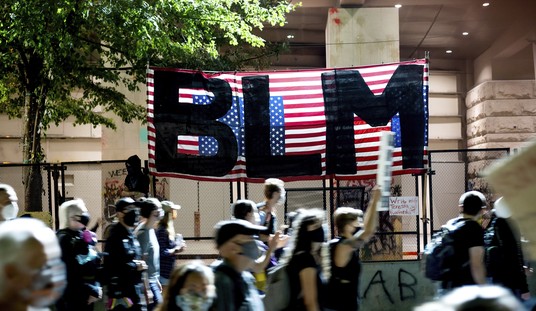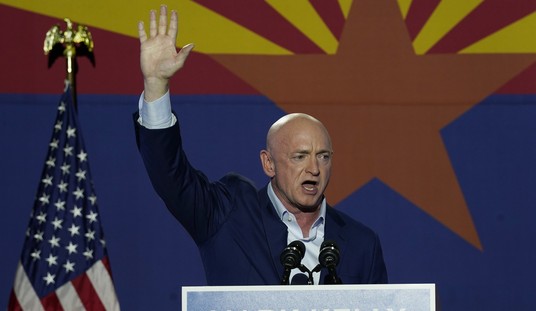First of all, thanks for having me here at Hot Air. It’s been a favorite read of mine since its launch and a frequent and kind linker of my videos and other work. So, when Allahpundit asked if I could help out while he was gone, I jumped at the chance to give the hardest-working team in blogging any help I could. I can guarantee you I can’t be as prolific as Ed or Allah, but I hope we’ll have some fun.
Let’s have a talk about public servants. I didn’t go looking for any of these stories today. They all popped up in normal reading of general news websites and in my Twitter feed.
Two conservative think-tankers take a look at the Current Population Survey, conducted for the Bureau of Labor Statistics, to delve a little deeper into the thesis of this March USA Today piece, which found “federal employees earn higher average salaries than private-sector workers in more than eight out of 10 occupations.”
At first glance, the CPS data show that the average hourly wage for a federal worker is about 48% higher than a private worker’s. Yet because federal employees tend to be more educated and experienced than their private counterparts, as Mr. Orszag noted, one has to control for these skill differences. This reduces the public-private salary gap—but it does not eliminate it. The federal wage premium for workers who have the same education and experience stands at 24%, still a windfall for public employees.
Even using all the standard controls—including race and gender, full- or part-time work, firm size, marital status, region, residence in a city or suburb, and more—the federal wage premium does not disappear. It stubbornly hovers around 12%, meaning private employees must work 13½ months to earn what comparable federal workers make in 12.
But those are conservative think-tankers, writing in the Wall Street Journal. Perhaps critics will not be satisfied with this data interpretation. Our tour of public service takes us next to Seattle, where a college administrator from his $304,000-a-year job so that he could collect his pension of $105,000 only to be hired back a month later, so he could collect both the salary and the pension.
Royer, the vice president for business and finance at Washington State University, tops a long list of college administrative staff members who’ve been able to boost their incomes by up to 60 percent by exploiting a loophole in state retirement laws.
A Seattle Times investigation has found that at least 40 university or community-college employees retired and were rehired within weeks, often returning to the same job without the position ever being advertised. That has allowed them to double dip by collecting both a salary and a pension.
About 2,000 Washington state employees collect both a pension and a salary from the state. One third of those collect a full-time salary while others are part-time or on call.
Illinois Gov. Pat Quinn has handed out raises – some of more than 20 percent – to his staff while proclaiming a message of “shared sacrifice” and planning spending cuts of $1.4 billion because the state is awash in debt.
The Democrat has given 43 salary increases averaging 11.4 percent to 35 staffers in the past 15 months, according to an Associated Press analysis of records obtained under the Freedom of Information Act.
They include a $24,000-a-year bump for the man promoted to shepherd the state through the fiscal storm.
Democratic state legislators are complaining that they’re being asked to cut, raise taxes, and borrow by a governor raising salaries substantially, and the AP finds little to support Quinn’s claims that he’s cut the governor’s office budget in aggregate.
In Pennsylvania, where the government is using tobacco settlement money to fund teachers’ pensions and filling its budget with federal money it won’t get, elected officials have seen fit to authorize new-debt spending on an Arlen Specter Library and a John Murtha Center for Public Policy. This is the same legislature that gave itself a pay raise in 2005 under the cover of night.
And, an analysis of the White House salary data illustrates why Joe Biden might think this is “recovery summer:”
Comparing salaries for identical positions from the Bush administration to the Obama administration, there are numerous notable increases. For example, in 2008, Christopher Byrne, who was assistant to Press Secretary Dana Perino, received $49,100. In 2010, Marissa Hopkins, who holds the exact same position under Robert Gibbs, makes $60,000.
Also interesting is the salary increases for employees who have worked in the Obama White House since 2009. Two of Obama’s speechwriters, for instance, Cody Keenan and Jonathon Lovett, received dramatic increases without a change in title or position. In 2009, both made $45,000. In 2010, they received a pay raise of $30,000 and both now make $75,000.
To be fair, being deputy to Robert Gibbs is arguably a much harder job than being Perino’s deputy.
Some will tell you public employee salaries, benefits, and pork are small potatoes (to mix my food metaphors in a delicious way), that bad actors are rare, and this kind of stuff just isn’t a priority when it comes to creating fiscal sustainability. Indeed, there are many wonderful public servants, and progress must be made on general entitlement spending, but just ask Montgomery County, Md. how making the public serve at the pleasure of public servants has worked out for them.
Exit question: Is Allahpundit really on vacation or is he answering his country’s call? Which is it, Sgt?







Join the conversation as a VIP Member